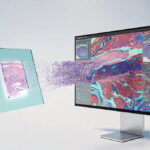Electronic Medical Records, or EMRs, have been the unsung heroes of modern-day healthcare, making healthcare more reachable to patients. However, what sets EMR software apart? Here, we will discuss the important parts of EMR solutions and focus mainly on seamless integration in an EMR.
Getting the EMR Landscape Right
Prior to diving deep, let’s discuss the importance of EMR software in the current healthcare sector. It’s almost like the transition from hand-written letters to email — EMRs have digitized the storage and retrieval of patient data, which has eased the operation of health care. Here are vital features to consider in EMR software development.
1. Making Connections with EMR Integration
At the center of EMR software — what makes it worth considering in a sea of other options is that it works well with others. Because of EMR integration, your patient’s data can effortlessly travel from department to department and even provider to provider. Say goodbye to isolated data and hello to improved teamwork and more intelligent decisions.
2. User-Friendly, No PhD Required
Doctors and nurses aren’t IT experts; they shouldn’t have to be. EMR software should be user-friendly, with an interface that’s as easy to navigate as a well-known city. Inputting and finding data should be a breeze.
3. Tailor-Made for You
Every healthcare setup is unique, like a fingerprint. EMR software should be as adaptable as a chameleon, allowing you to customize it to your needs and workflows. It should feel like it was made just for you.
4. Fort Knox Security
Patient data is like a treasure trove for hackers, so EMR software needs rock-solid security. Think encryption, ironclad user authentication, and strict access controls. Compliance with HIPAA and other data protection rules is non-negotiable.
5. Your Trusty Advisor: Clinical Decision Support
EMR software should be like a helpful assistant, offering insights based on data and guidelines to support healthcare decisions. Fewer errors, better care – that’s the goal.
6. On the Go with Mobile Compatibility
With the current speed of life, EMR software should be available on handheld devices. The feature enables medical workers to view patients’ medical records using mobile devices, which boosts efficacy as well as patient care. This is something like taking along a handy tool- kit that would ensure health care remains sensitive and active no matter where it goes.
7. Ready for Growth
Healthcare facilities can expand rapidly. EMR software should be like a stretchy shirt, growing with you and handling more patients and facilities without sweat.
8. Telemedicine? No Problem
For long-term telemedicine, EMR software must be adapted. It must smoothly merge with the telehealth platforms and effortlessly include virtual appointments in mainstream care. This integration resembles building a bridge connecting technology and patient care, guaranteeing that health care stays convenient and client-focused under online circumstances.
9. Data Insights at Your Fingertips
Data is gold in healthcare. EMR software should be your data-mining partner, offering powerful analytics and reporting tools for better patient outcomes and smoother operations.
10. Staying on the Legal Side
Healthcare regulations keep evolving. EMR software should be a quick learner, adapting to changing rules without causing chaos in your healthcare routine.
11. E-prescribing: A Medication Game-Changer
The same can be said for EMR software’s importance in electronic drug prescription; it is like having a knowledgeable pharmacist beside you. View it as a reliable helper that takes nursing staff through the prescription process without much room for mistakes while providing quality services. This ensures that patient care and safety are improved, and the drugs are properly managed, thus making it easier and more profitable for the patients and those concerned.
12. Patient Power with a Portal
Patients are more engaged when accessing their medical records through a secure portal than traditional records access methods, such as requesting paper copies or relying solely on verbal communication with healthcare providers. It’s like giving them a window into their healthcare journey.
13. Prepared for the Worst: Disaster Recovery
Life throws curveballs, even in healthcare. EMR software should have solid disaster recovery and backup systems to keep your data safe and sound.
14. Guiding Hand: Training and Support
EMR software should feel like an intuitive experience to users instead of a puzzling mess. As such, providers should provide vast training opportunities and always be there as an assisting hand as if one were speaking with a good friend who could be trusted blindly. This method provides assurance to healthcare providers so that they are able to master and use the software efficiently while attending to patients.
15. Budget-Friendly
EMR software is a must-have in the healthcare industry, but making the right investment is critical. Choose a system that provides both substantial capabilities and reasonable pricing. Consider it like looking for a dependable car that performs well and fits your budget. Balancing power and affordability means your healthcare organization gets the most value possible, making every penny count toward better patient care.
In a Nutshell
EMR software is your ally in modern healthcare, and getting the right features is crucial. Think EMR integration, a user-friendly interface, customization, top-notch security, and data analytics. Stay adaptable, keep learning, and remember, it’s all about making patient care the best it can be.
Did you find this article helpful? You can check out our website for more awesome content like this.
Read Also
- Automated Healthcare Software Solutions: How Intelligent Platforms Are Redefining Clinical, Administrative, and Operational ExcellenceThe healthcare industry is undergoing a seismic transformation. Rising patient volumes, value-based care models, staffing shortages, and complex regulatory demands have prompted organizations to look beyond traditional tools and embrace advanced software automation. As providers search for innovative partners capable of tailoring these sophisticated systems to real-world workflows, many turn to MCSI (Managed Care Systems,… Read more: Automated Healthcare Software Solutions: How Intelligent Platforms Are Redefining Clinical, Administrative, and Operational Excellence
- Why Whole Slide Imaging Shapes the Future of Digital PathologyWhole slide imaging has become one of the most important developments in modern pathology. It changes how tissue is examined, how cases are shared and how pathologists collaborate with the wider care team. More than a technological upgrade, it represents a shift in how laboratories think about their workflow, their storage needs and the tools… Read more: Why Whole Slide Imaging Shapes the Future of Digital Pathology
- Comparing 2025 Dental Practice Management Software OptionsSoftware Key Strengths Potential Limitations Best For Dentimax • Offers both cloud-based and on-premise/server deployment. • Tight integration between imaging (e.g. X-ray sensors) and practice management, charts, treatment planning, imaging all in one. • Transparent pricing and relatively simple UI/usability; solid for small to medium general practices. • May lack some of the… Read more: Comparing 2025 Dental Practice Management Software Options
- Top Innovations in Dermatology and Skincare TechnologiesHave you ever wondered how skincare keeps getting better year after year? From fighting acne to reducing wrinkles, today’s treatments seem more advanced than ever before. The tools and techniques used by dermatologists today are smarter, safer, and more effective than those we had just a few years ago. These breakthroughs don’t just help with… Read more: Top Innovations in Dermatology and Skincare Technologies
- Telehealth and Beyond: Building a Connected Continuum of CareHealthcare is on the verge of a radical transformation. Technology no longer simply supports medicine; it actively shapes how care is delivered and experienced. Achieving a seamless continuum demands more than deploying tools—it requires intentional design, coordinated teamwork, and innovative platforms that adapt to diverse clinical and patient needs. This article explores key strategies for… Read more: Telehealth and Beyond: Building a Connected Continuum of Care






